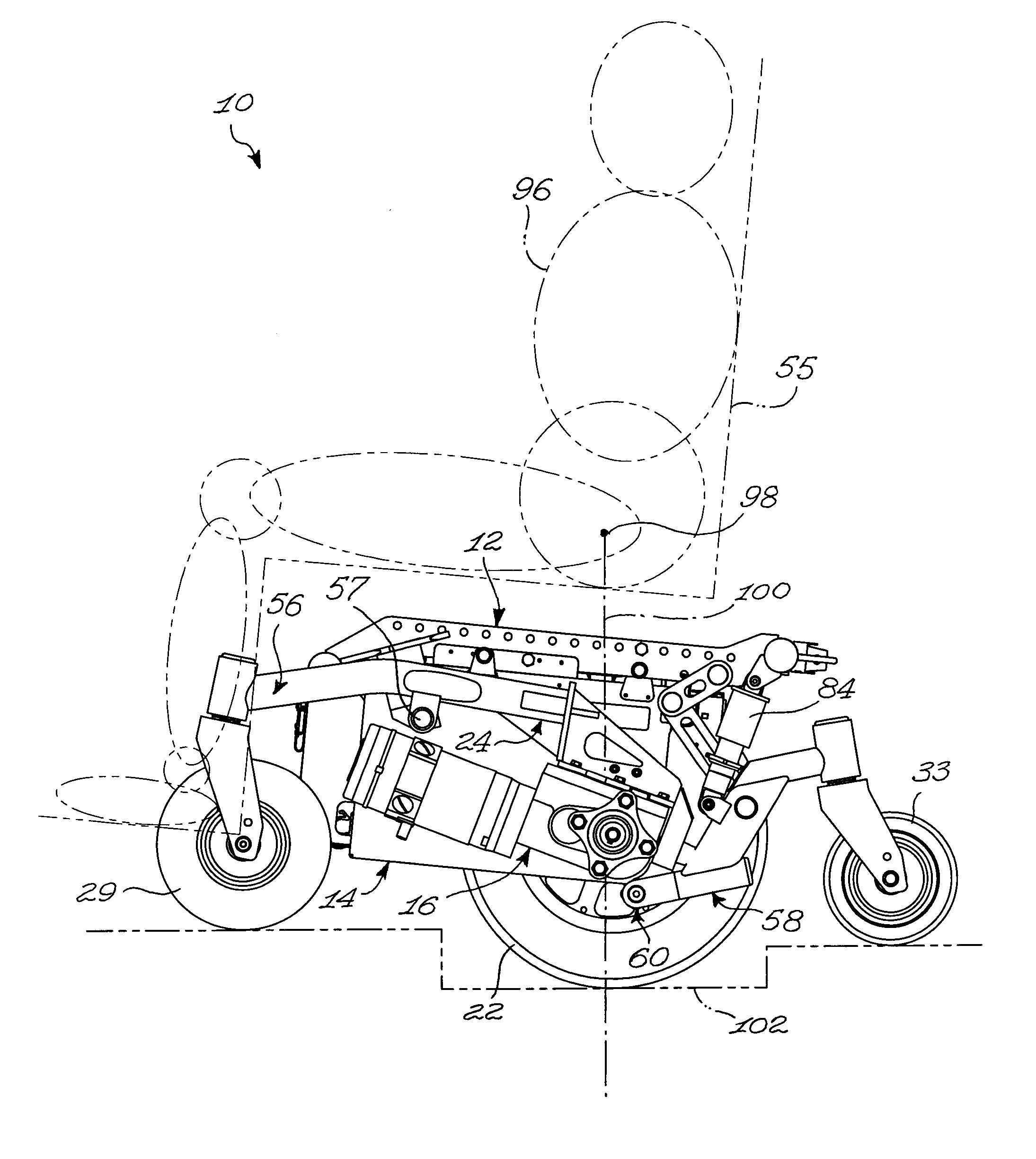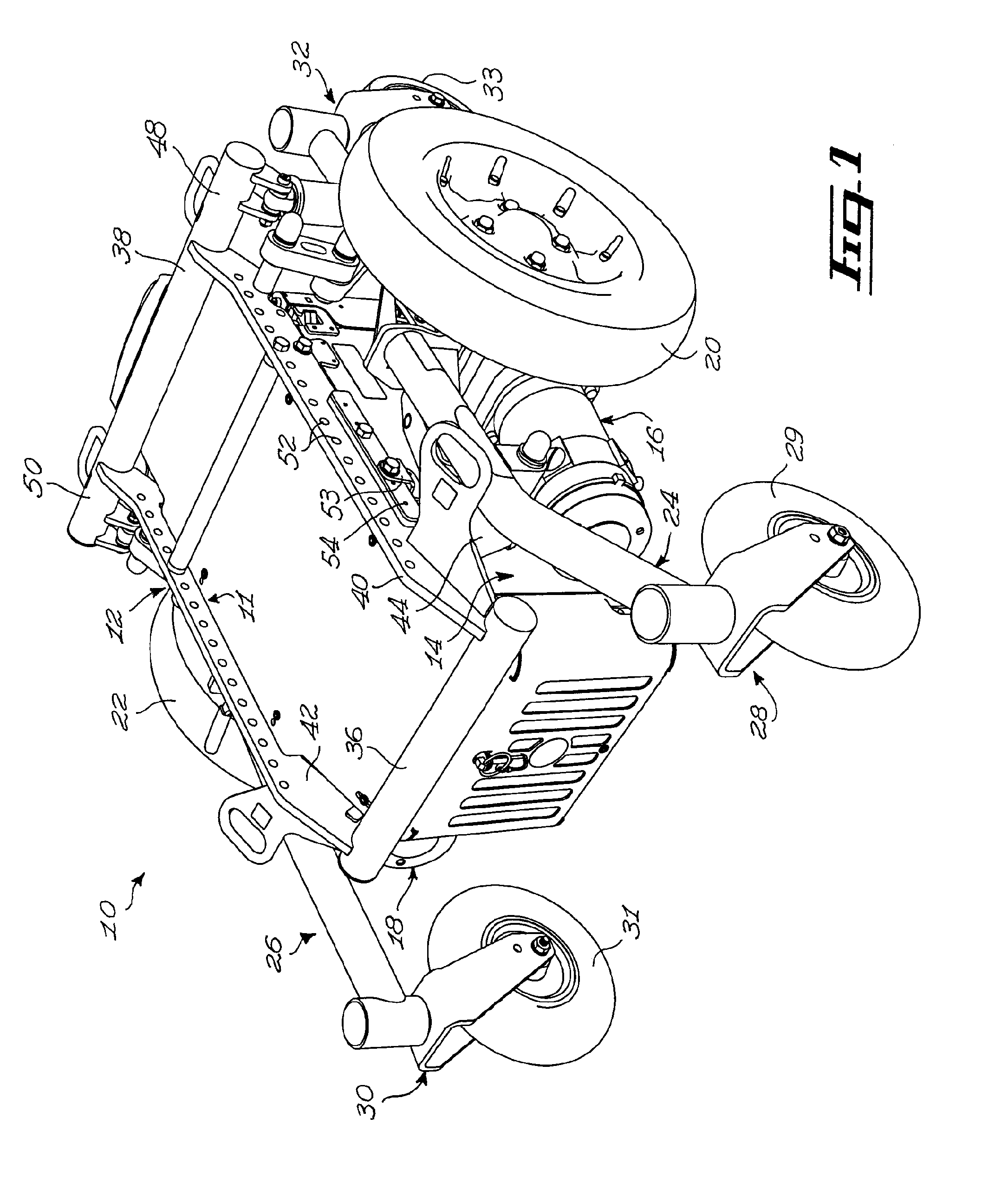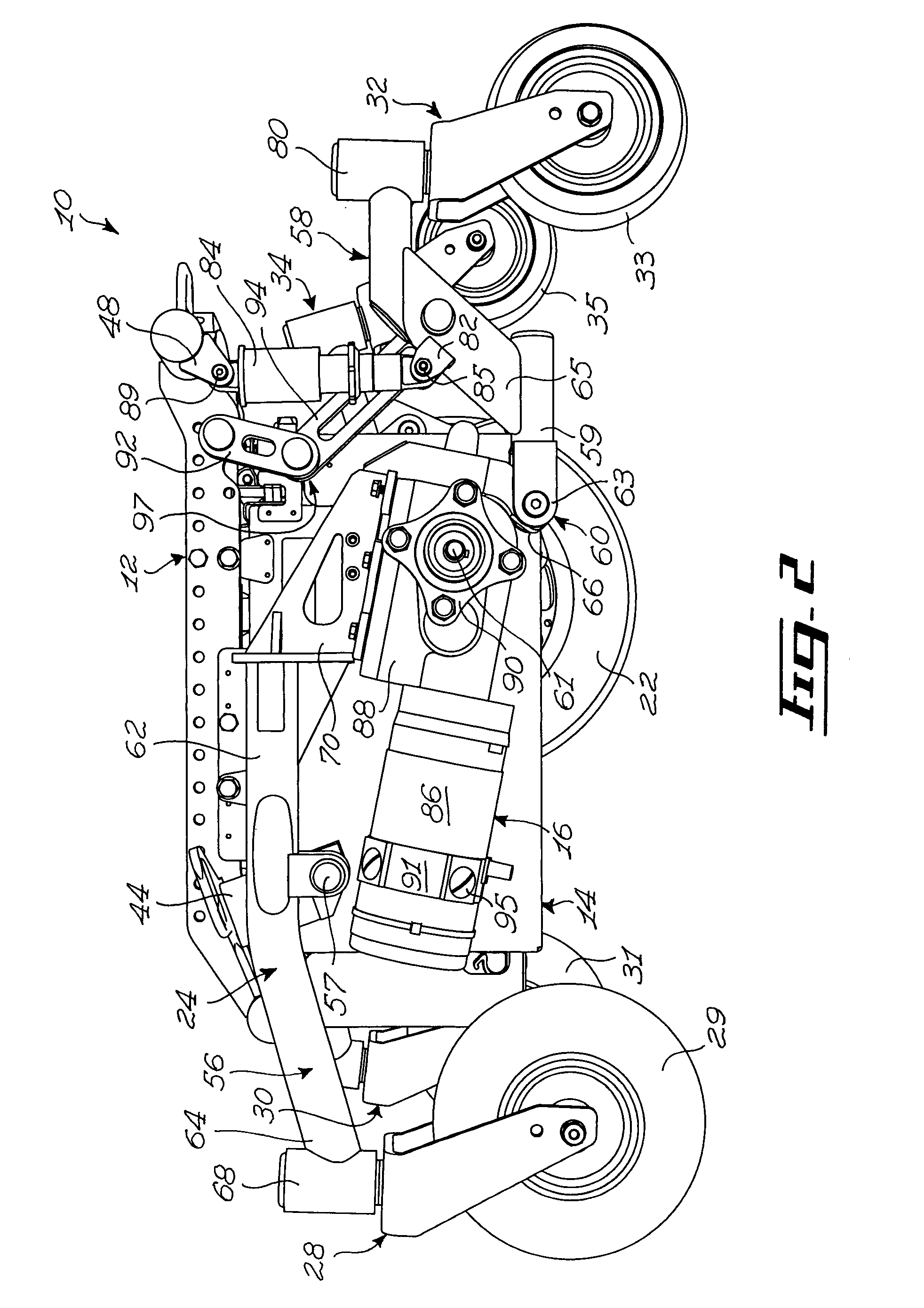Wheelchair base
a technology for wheelchairs and wheels, applied in the field of wheelchairs, can solve the problems of wheelchairs having reduced stability, uneven weight distribution among casters, and adding to user discomfort, so as to achieve uneven weight distribution, improve comfort, and dampen irregularities and vibrations
- Summary
- Abstract
- Description
- Claims
- Application Information
AI Technical Summary
Benefits of technology
Problems solved by technology
Method used
Image
Examples
Embodiment Construction
[0044]FIGS. 1 to 4 show various aspects of an embodiment of a wheelchair base 10 in accordance with an embodiment of the present invention. For example, the wheelchair base 10 is a base for a mid-wheel power drive wheelchair. Referring to FIG. 1, the wheelchair base 10 generally comprises a chassis 12, a battery compartment 14, two mid-wheel power drive assemblies 16 and 18, to which respectively first and second drive wheels 20 and 22 are mounted, first and second pivot arm assemblies 24 and 26, front caster assemblies 28 and 30 including respectively front end first and second wheels 29 and 31, and rear caster assemblies 32 and 34 including respectively rear end first and second wheels 33 and 35, only one of which is seen in FIG. 1.
[0045]The reader skilled in the art will readily appreciate that the terminology “front” and “rear” is used to facilitate the description of the wheelchair base 10 and should not be used to restrict the scope of the invention. Indeed, some usable embodi...
PUM
 Login to View More
Login to View More Abstract
Description
Claims
Application Information
 Login to View More
Login to View More - R&D
- Intellectual Property
- Life Sciences
- Materials
- Tech Scout
- Unparalleled Data Quality
- Higher Quality Content
- 60% Fewer Hallucinations
Browse by: Latest US Patents, China's latest patents, Technical Efficacy Thesaurus, Application Domain, Technology Topic, Popular Technical Reports.
© 2025 PatSnap. All rights reserved.Legal|Privacy policy|Modern Slavery Act Transparency Statement|Sitemap|About US| Contact US: help@patsnap.com



